What is an Embedded PC?
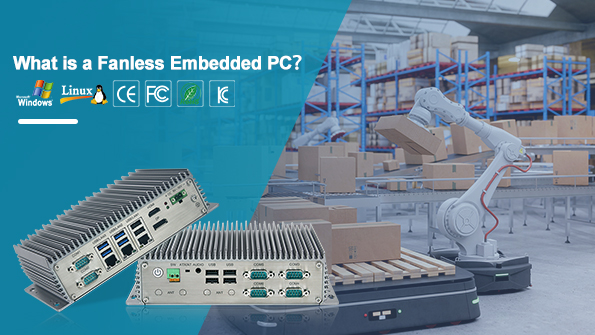
An embedded computer is a specialized computer system designed for specific functions. It is usually built into other devices to perform dedicated tasks. These systems are highly reliable, stable, and real-time, making them widely used in many fields, such as industrial automation and control, smart transportation, medical imaging, and digital signage.
What is an Embedded PC?
An embedded PC is a specialized computing system designed to perform specific tasks or functions within a larger system or device. Unlike general-purpose computers, embedded PCs are often integrated into everyday objects, machinery, or equipment, such as cars, appliances, medical devices, and industrial machines. These computers are optimized for efficiency and reliability, with fixed purposes and dedicated software to control and monitor operations.
Embedded PCs come in many forms, from microcontrollers with minimal processing power to more complex System-on-Chip (SoC) designs with stronger computing capabilities. They are customized to meet industry requirements, such as industrial automation and control, harsh environments, transportation and smart cities, military and defense, and medical and healthcare applications.
Advantages of Embedded PCs
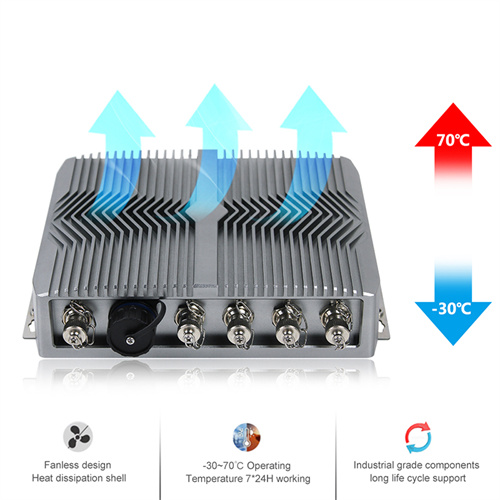
• Reliability and Durability
Embedded PCs are built for rugged or harsh environments, operating in temperatures from -40°C to 70°C. They can function efficiently and stably even in enclosed metal spaces with poor airflow.
• Compact Design
Their small and compact structure allows them to fit into tight spaces and be installed in any position or orientation. Despite their size, they deliver high performance with the latest processors, enabling fast responses and complex task execution.
• Powerful Processing
Embedded computers are not only compact but also powerful. They feature high-performance processors and ample memory to handle demanding tasks. Advances in CPU hybrid architectures, Windows 11, and AI acceleration have further enhanced their capabilities.
• Efficient Cooling
The CPU, often called the "brain" of a computer, generates significant heat. Without proper cooling, an embedded PC would malfunction. While some still use fans, passive cooling improves reliability and reduces power consumption. Many also use aluminum casings, which are durable and help dissipate heat efficiently.
Types and Applications of Embedded Computers
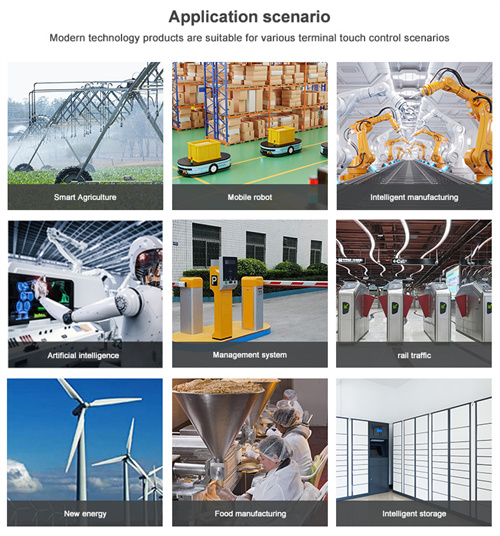
Embedded PCs are widely used across industries as part of larger systems. In industrial automation, they precisely control machinery and processes. In transportation, they provide reliable computing for vehicle systems. In healthcare, they power medical devices requiring a silent and stable operation. Types vary from rugged industrial PCs to panel PCs, mini PCs, vehicle computers, and IoT gateways.
1. Rugged Industrial Computers
Rugged industrial embedded PCs are built for extreme environments. Their extruded aluminum casings protect against harsh conditions, and internal components are designed for durability. They can be installed outdoors without additional protection.
Use Case:
Rugged industrial PCs are ideal for offshore oil rigs, where heavy machinery and flammable materials are present. Their fanless, sealed design withstands temperatures from -20°C to 70°C.
Remote facilities like oil rigs require always-on connectivity, whether for Wi-Fi, cloud monitoring, or IoT sensors. Rugged industrial PCs outperform consumer-grade hardware in extreme heat, cold, humidity, and corrosive conditions.
Solution 1: InnoAioT EFIC-2012A Rugged Industrial Computers
The EFIC-2012A features a 12th Gen Intel® Core™ i3/i5/i7 processor for powerful multitasking. With rich I/O and expandability, it integrates seamlessly with peripherals. Windows 11 support adds advanced functionality without sacrificing durability.
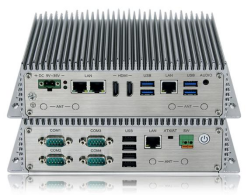
Specifications:
• 12th Gen Intel® Alder Lake Core™ i3/i5/i7
• 2 x DDR5 4800MHz SODIMM, max. 64GB
• 1 x 2.5" SATA HDD, 1 x M.2 2280 NVMe/SATA SSD
• 1 x M.2 2230 (Wi-Fi/BT), 1 x M.2 3042/3052 (4G/5G)
• Dual HDMI, 4 x Intel® GbE (WoL/PXE)
• 4 x COM (2 x RS232/422/485), ESD/surge protection
• TPM 2.0, vPro support
• Operating temp: -30°C to 70°C
• 9V–36V DC input (OVP/OCP/RPP)
Solution 2: InnoAioT EFIC-6000 Series of IP67/69K Waterproof Industrial PC
The EFIC-6000 is a rugged, waterproof PC with IP67/69K rating, stable under high-pressure water jets. Ideal for food/beverage processing, outdoor digital signage, and automation.
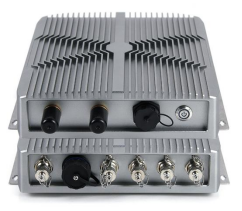
Specifications:
• 12th Gen Intel® Alder Lake Core™ i3 / i5 / i7 processor
• 2 x DDR5 4800MHz SODIMM, MAX 64GB
• 1 x 2.5 SATA HDD, 1*M.2 2280, NVMe or SATA SSD
• 1 x M2.0 ( 2230, Wifi+BT ),1 x M2.0 ( 3042 / 3052,4G/5G )
• M12 I/O ports:1 x HDMI / 2 x LAN / 2 x USB / 1 x COM
• Aluminum alloy casing,Full system IP67 level dustproof & waterproof
• Supports TPM2.0 security encryption and vPro technology
• Wide Operating Temperature -30°C to 70°C
• 9V to 36V DC Wide Range Power Input,Supporting OVP / OCP / RPP
2. Industrial Panel PC
Industrial panel PCs combine embedded computing and displays for portable human-machine interfaces (HMI). Used in factory automation, they feature rugged screens (resistive/capacitive touch) resistant to gloves, chemicals, and vibrations.
Use Case:
These PCs streamline assembly lines, allowing workers to interact via touchscreens protected against dust, moisture, and extreme temps. Waterproof models can even be rinsed clean.
Solution: InnoAioT Intel Celeron J6412 Series of Industrial Panel PC
Offering 10"–24" displays, the J6412 series runs Windows 11 for intuitive operation.
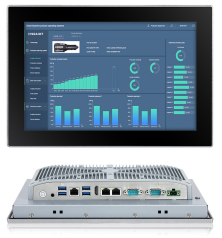
Specifications:
• Industrial-grade LCD panel with 30k backlight lifetime
• True-flat touchscreen with multi-touch projected capacitive control
• IP66 grade aluminum alloy front panel
• Intel® Celeron® J6412 quad-core 2.0 GHz processor
• 1 x DDR4 SDRAM, max.32GB, 1 x M.2 2280 / 1 x 2.5" SATA SSD
• 3 x Intel® 226-V 2.5GbE Ethernet, support WoL and PXE
• 2 x RS232/422/485, RS485 support automatic flow control
• TPM 2.0, VESA mount, 9V–36V DC input
Embedded PCs in Daily Life
Embedded PCs are all around us, quietly powering the modern world. Imagine stepping outside and boarding a smart bus—its onboard system updates routes and stop information in real time, thanks to an embedded PC. In the subway, ticketing machines rely on embedded systems to process transactions quickly and display accurate route details. At the office, a smart access control system recognizes you, opens the door automatically, and records attendance seamlessly. These familiar scenarios are made possible by embedded PCs working silently in the background, enhancing convenience, efficiency, and automation in our daily routines. And that’s just the surface. In industries beyond everyday visibility—like manufacturing, energy, or logistics—embedded PCs are critical for system integration, real-time control, and reliable operation.
Why Choose an Embedded PC?
Embedded PCs are designed for versatility. They perform reliably across a wide range of environments and applications, from factory floors to smart offices. Thanks to their compact design, durability, and low power consumption, even office users increasingly prefer fanless embedded PCs over traditional desktop towers. With no moving parts, they are more resistant to dust, vibrations, and heat, making them less prone to failure.
Key advantages of embedded PCs include:
- • Small footprint for space-saving integration
- • High durability for industrial or harsh conditions
- • Excellent stability and long lifecycle for 24/7 operation
- • Flexible I/O and OS compatibility for custom applications
Whether you’re integrating computing power into machinery, kiosks, or smart access systems, embedded PCs offer the perfect balance of performance and reliability.
How Do You Find The Best Embedded PCs For Your Industry Application?
There are several parameters to consider when choosing the embedded computer that best fits your needs. These include factors such as the working environment, temperature range, operating system, I/O interfaces, and more. Typically, you can find detailed specifications on our website, or you can leave us a message with your specific requirements, and we’ll be happy to assist you. Since 2008, InnoAioT has been providing industrial computers and embedded PCs. We have rich experience in manufacturing both PCs and industrial motherboards. Choosing InnoAioT means choosing a reliable, low-maintenance solution. Contact us now to integrate embedded PCs into your larger system or device.

